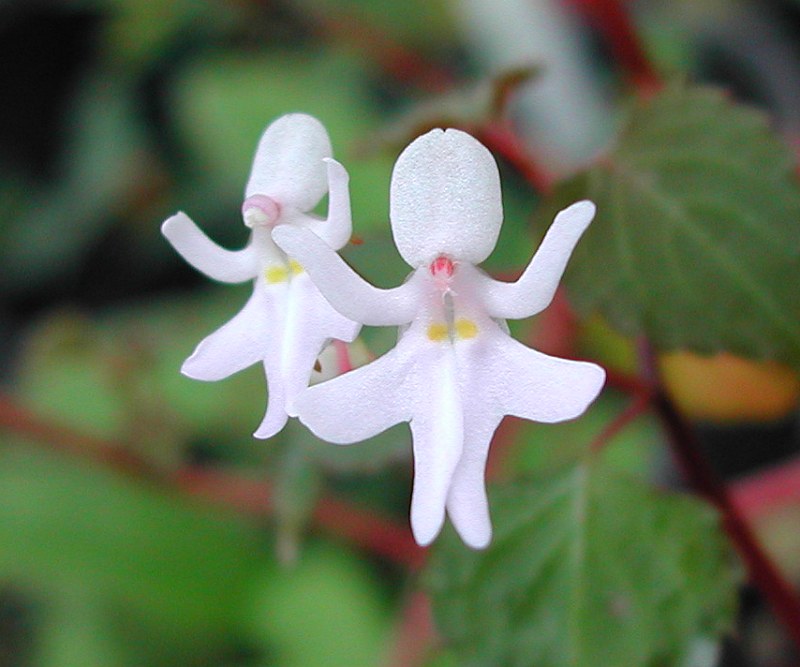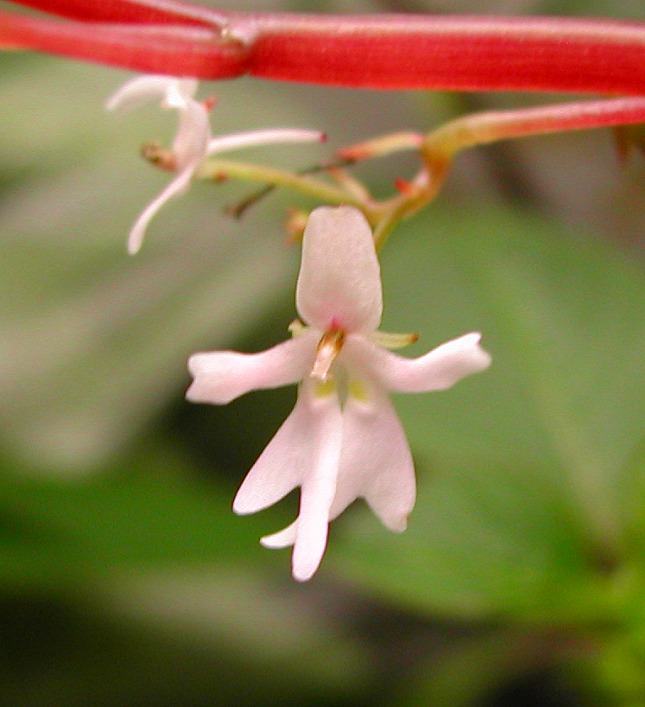Isn't this outrageous? It doesn't have a common name, but i call it the Dancing Girl Impatiens! Impatiens bequaertii is a rare species from the rainforests of east Africa. This petite plant only grows about a foot across and the blooms are barely 1/2" long, but their enchanting shape makes up for it! The petals resemble a little girl in a skirt with outstretched arms. These white or light-pink blossoms appear year-round for me, and the foliage is attractive too. This is a very rare collector's plant - I don't know any other U.S. source for it on the internet.

Impatiens bequaertii is a perennial species that trails and climbs to about 8" in each direction, rooting wherever it touches the soil. It looks nice when grown in a hanging planter, so the flowers can be admired up at eye level. The blooms are mostly white but occasionally soft-pink, and have 2 yellow "buttons" on the petals. The heart-shaped leaves are a nice olive green on top, and the underside is wine red, as are the branches. This a true species, not a hybrid. It's possible that it can be crossed with some other Impatiens species to create new hybrids.

This Impatiens comes from a climate that is mild year-round, rarely getting above the low-80s or below 45 degrees. It is untested outside this temperature range. It's possible that it may lag above 85 degrees, so consider it experimental in warmer areas like Florida. It probably can handle down to about 35 degrees, but i don't think it can survive frost. It grows well indoors in a small pot. Like most Impatiens, it prefers filtered light and moist, well-draining soil. Over 40-50% humidity is best.

A cross-legged "curtsey"!
Source
READ MORE»

Impatiens bequaertii is a perennial species that trails and climbs to about 8" in each direction, rooting wherever it touches the soil. It looks nice when grown in a hanging planter, so the flowers can be admired up at eye level. The blooms are mostly white but occasionally soft-pink, and have 2 yellow "buttons" on the petals. The heart-shaped leaves are a nice olive green on top, and the underside is wine red, as are the branches. This a true species, not a hybrid. It's possible that it can be crossed with some other Impatiens species to create new hybrids.

This Impatiens comes from a climate that is mild year-round, rarely getting above the low-80s or below 45 degrees. It is untested outside this temperature range. It's possible that it may lag above 85 degrees, so consider it experimental in warmer areas like Florida. It probably can handle down to about 35 degrees, but i don't think it can survive frost. It grows well indoors in a small pot. Like most Impatiens, it prefers filtered light and moist, well-draining soil. Over 40-50% humidity is best.

A cross-legged "curtsey"!
Source



















































